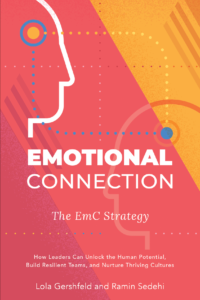Leadership development programs are content-heavy but inadequate in guiding leaders to understand and value the power of human connections.
Current programs still focus on teaching behavioral techniques and situational skills to address the known issues. However, the science shows that long-term behavioral change does not occur without an experiential process, and our ever-changing environment requires a deeper skillset.
A recent article from McKinsey suggests the presence of psychological safety as critical to superior organizational performance.[1] It argues that leadership development programs should help leaders develop the skillset which allows them to build psychological safety within their organization.
What is the best way to empower leaders so that they can be engaged and impactful at a deeper level in their workplace?
Working with hundreds of employee engagement and conflict resolution cases, we have identified one common denominator to building psychological safety: emotional connection.
Emotional connection is the framework through which leaders create an environment of active engagement, thereby nurturing innovation and creativity in any business.
Of course, this is easier said than done.
Change management is fundamentally a people process that addresses the vision or goals for the change, but it must also thoughtfully manage the fears and emotions present during the change.
Leadership development programs must focus individuals on their ability to understand emotions, engage with people at the emotional level, and be equipped to be responsive to their employees’ emotional needs. This allows leaders to build durable relationships throughout the organization to withstand change, complexity, and growth.
In our book, Emotional Connection: How Leaders Can Unlock the Human Potential, Build Resilient Teams, and Nurture Thriving Cultures, we offer a roadmap for leaders and leadership development programs to gain facility in building and enhancing environments of high psychological safety.

Emotional connection is based on attachment theory, one of the fundamental theories of human development. Once understood, emotional connection can naturally be integrated into the organization’s culture, making it possible for people to feel heard, cared for, and valued.
Leading with emotional connection will allow for increased employee engagement, cohesive work teams, and high trust; it creates a connected culture where people can thrive.
References:
[1] “Psychological safety and the critical role of leadership development,” McKinsey Quarterly, February 2021, McKinsey.com